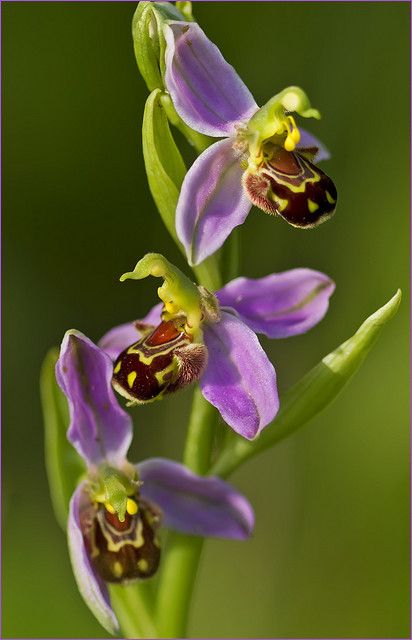Bee Orchid - Ophrys apifera

Ever been catfished by a flower? This orchid likes to frustrates male bees all across Europe – and gets a real benefit from it too. By mimicking the appearance female longhorn bee (Eucera longicornis), the Bee Orchid uses its pollinia (seen in yellow) to deposit pollen on unsuspecting bees looking for a sweet nectar reward, allowing pollination of new flowers if the bee gets fooled twice. While most effective in areas like Southern Europe where longhorn bees are more common, in England the Bee Orchid is self-pollinated and most frequently found in the southeast, although its existance is typically transient and very unpredictable and blooms in June-July.
Their deceptive looks and plentiful nectar aren’t the only weapons in their reproductive arsenal, as the Bee Orchid can even produce compounds similar to that of female mating pheromones to really seal the deal with male bees who come to visit.
Like most orchids, the seeds of the Bee Orchid are remarkably small, meant for long range wind-dispersal (anemochory). Keep an eye out on roadsides, grasslands, and moors for these remarkable flowers in the summer, particularly in chalky soils.

Sources:
The Wildlife Trusts – Bee Orchid
Natural History Museum – Sneaky Orchids Manipulate Bees for Pollination
Norfolk Wildlife Trust – Bee Orchid
